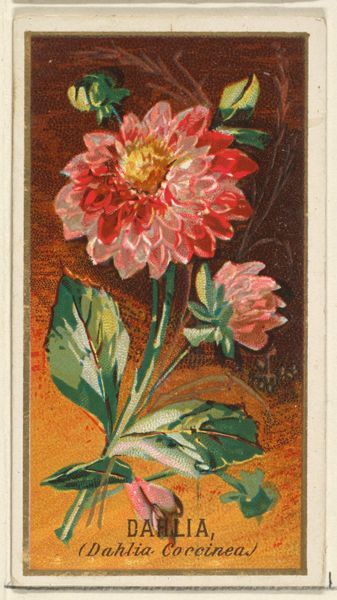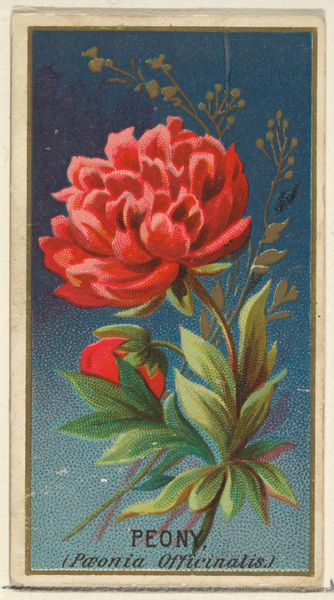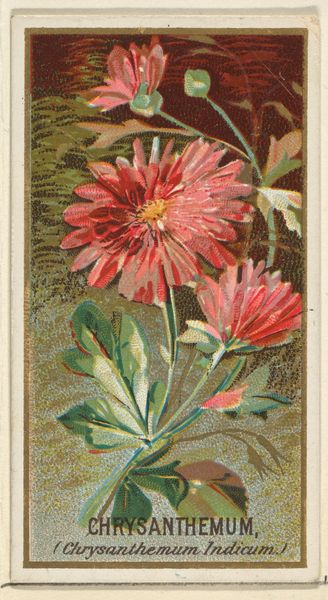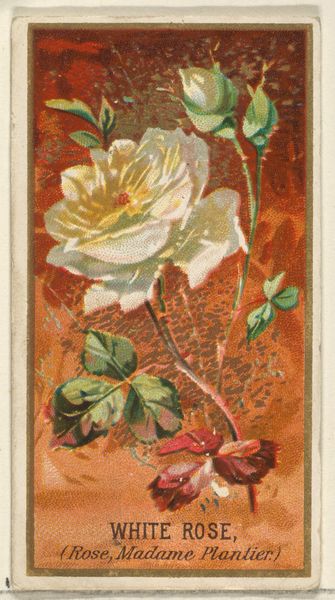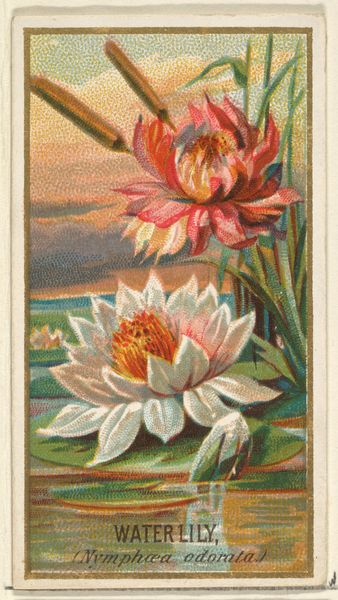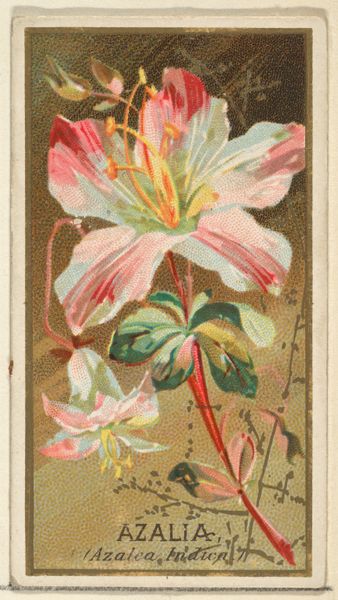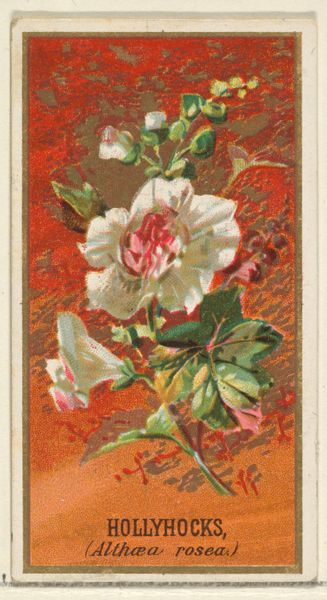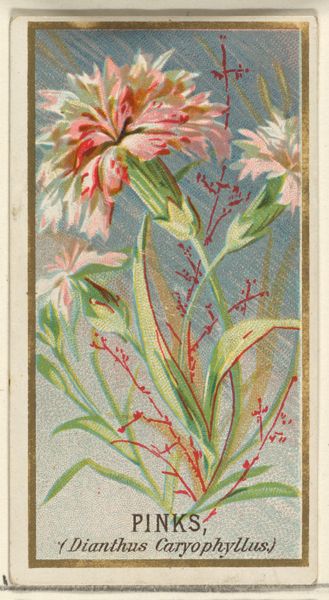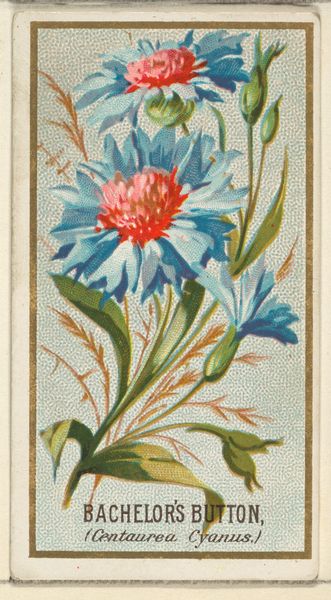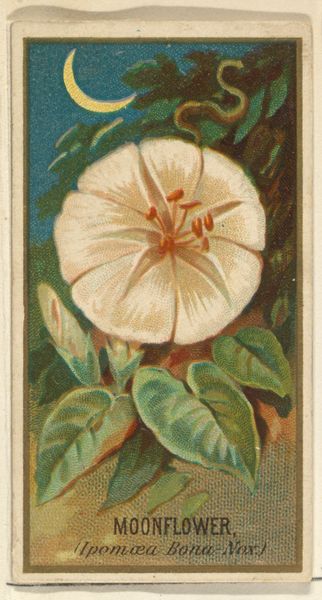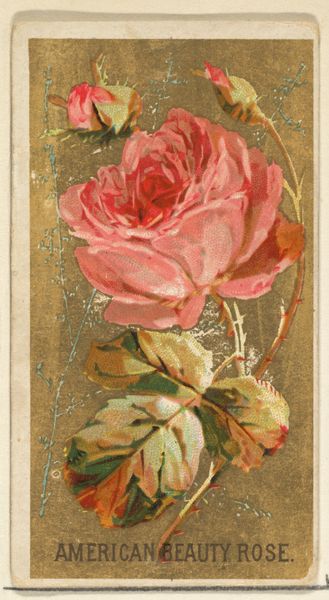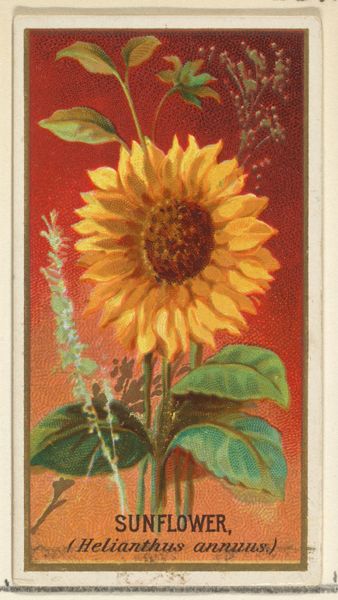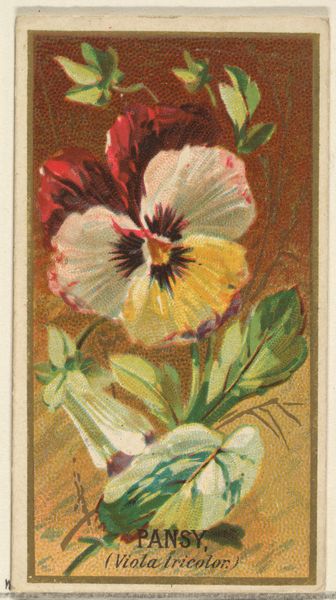
Clover (Trifolium pratense), from the Flowers series for Old Judge Cigarettes 1890
0:00
0:00
drawing, print
#
drawing
# print
#
impressionism
#
post-impressionism
#
watercolor
Dimensions: sheet: 2 3/4 x 1 1/2 in. (7 x 3.8 cm)
Copyright: Public Domain
Curator: At first glance, this image appears remarkably cozy, perhaps owing to the close cropping of its composition. Editor: Indeed! This is "Clover (Trifolium pratense)," a print produced circa 1890 by Goodwin & Company as part of their "Flowers" series for Old Judge Cigarettes, now residing here at the Metropolitan Museum of Art. What’s immediately striking is its intimacy. You feel you could almost pluck the clover right off the card. Curator: Absolutely, and there's a certain innocence embedded within. Clover, for many cultures, serves as an emblem of fortune, haven, and optimistic renewal. But there is also a strange contrast created between the soft focus of the impressionistic application of the color and the commercial, industrial usage of the piece itself, which has a distinct visual appeal and speaks volumes about the commercial landscape of that era. Editor: Precisely. Tobacco cards like this were not high art; they were populist objects, distributed to promote consumption. Their value now lies in what they reveal about the convergence of industry, art, and the burgeoning visual culture. Consider how art found its way into everyday life. What effect do you think that sort of accessibility might have on the public role of art and the politics of imagery in society? Curator: Such an open accessibility, coupled with a seemingly innocuous subject matter, facilitates a deeply powerful insertion into the subconscious. Here, the symbol of clover becomes inextricably intertwined with the addictive nature of tobacco, a potent, even subliminal pairing that speaks to the psychological and emotional connection cultivated between consumer and commodity. The very act of holding such art influences behavior and shapes desires, perpetuating an association far more profound than any overt advertisement. Editor: You’re spot on! It raises essential questions about the ethics and effects of visually conditioning desires within the culture of the time. Viewing the piece prompts a deep historical consideration for visual and behavioral economics, and consumerism at large. Curator: Considering such history offers us potent lessons in how we perceive and respond to imagery in today's media-saturated world. It reminds us that even the simplest of symbols carries the profound ability to shape and influence. Editor: I agree; hopefully our consideration prompts the listener to view the historical imagery, like this one, through a lens of conscious inquiry.
Comments
No comments
Be the first to comment and join the conversation on the ultimate creative platform.
